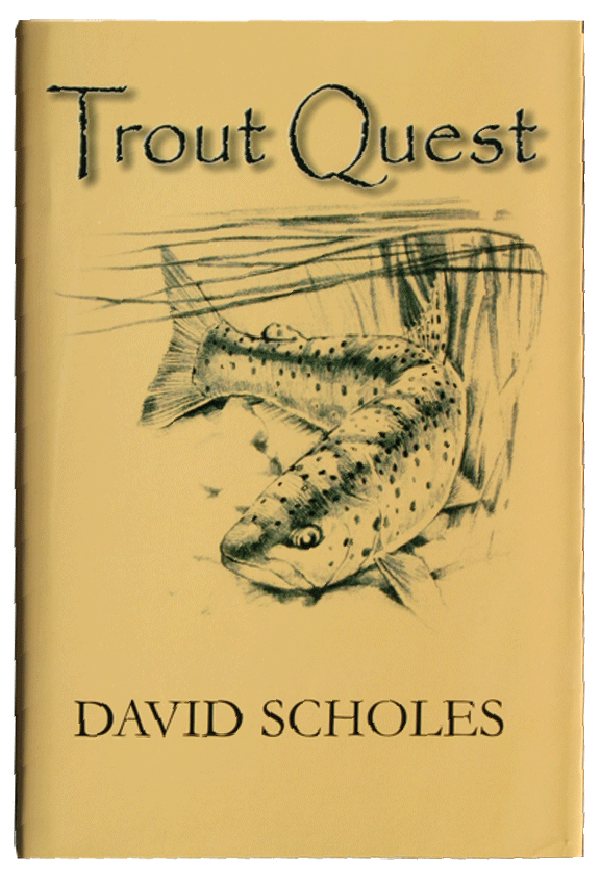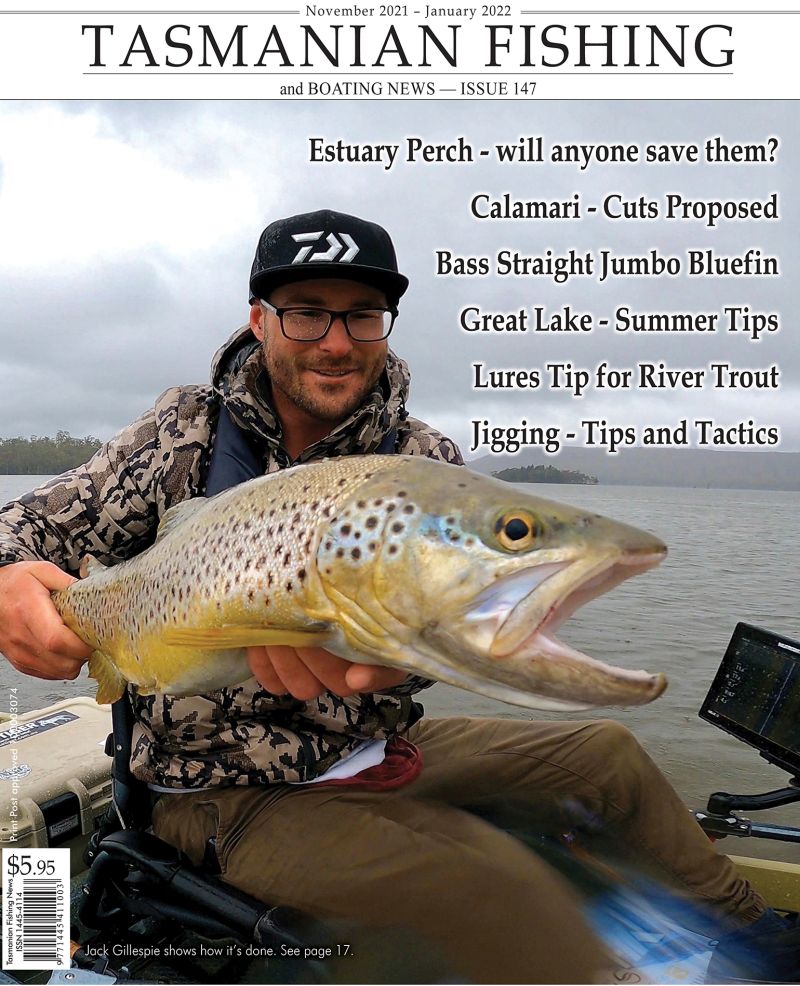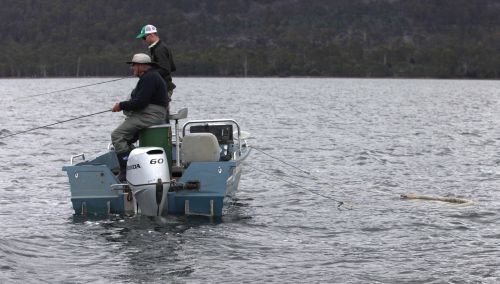From the Archives ...
Fishing on the Wild Side
Fishing on the Wild Side
Mike Fry doesn’t only live on the Wild Side of Tasmania, but also goes fishing in probably the wildest boat ever to troll for trout—certainly in Tasmania.
When your mate says ‘What are you doing tomorrow, want to come up the Gordon for the night?’ it would be pretty hard to say anything else except “you bet” and start checking out your tackle box and packing your overnight bag. But if your mate was Troy Grining and he wanted to give his new 52ft, high speed cruiser a run across Macquarie Harbour, test the new onboard dory with a chance of landing a nice Gordon River Brown you would have to feel privileged. I didn’t say anything about getting on my hands and knees and kissing his feet…just having a lend of ya’ but I did feel very appreciative.
Please check all relevant authorities before fishing - www.ifs.tas.gov.au and dpipwe.tas.gov.au . Don't forget issuu.com/stevenspublishing for years of back issues !
Chasing trout chasing Duns
Mayflies and trout, a combination intertwined in the legend and mystique of fly fishing. Neil Grose explains his theories on chasing trout feeding on mayfly duns.
As we move into mayfly time, we can expect the magical times, the memorable times, and often the frustrating times as the mayflies we love so much begin to hatch in regular profusion.
- Category: Trout Fishing
- Hits: 8692
Bead flies with a difference - Bead "bulging" nymphs
by David Higgins
One of the greatest innovations to fly fishing and fly tying, particularly in recent times, is the use of "Bead Heads" nymphs.There is no doubt that bead head flies in their many forms catch fish. Over the years, a huge number of fascinating fly patterns have been developed.
- Category: Fly Fishing
- Hits: 8278
Read more: Bead flies with a difference - Bead bulging nymphs
Inland Fisheries interviews with anglers
Inland Fisheries inspectors interviewed 3000 anglers last year. Of these 30% of anglers were bait fishing, 23% trolling, 22% spinning and 25% fly fishing, noting that some anglers use more than one method of fishing. A total of 2,028 fish were caught by these anglers; 1,714 (85%) were brown trout, 249 (12%) rainbow trout, 45 (2%) Atlantic salmon and 20 (1%) brook trout. More details will be found in the IFS Annual Report, which is out soon.
- Category: IFS, DPIPWE, MAST and Peak Bodies
- Hits: 6210
 The Other side of the Hill - David Scholes Biography
The Other side of the Hill - David Scholes Biography
The full story on David Scholes has finally been published. Written by Launceston gynaecologist, Don Boden it is a remarkable story of an Aviator, Angler, Artist and Author.
- Category: Fishing Books
- Hits: 10438
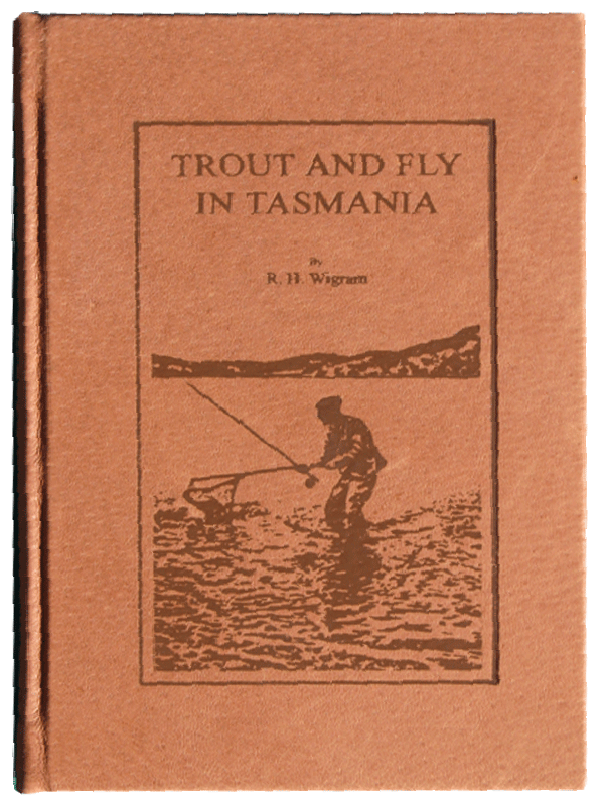 Trout and Fly in Tasmania
Trout and Fly in Tasmania
by R.H. Wigram
The original is a rare and collectable classic. Trout and Fly in Tasmania was published in 1938 during the war years and at this time quality paper was not available.
- Category: Fly Fishing
- Hits: 6916
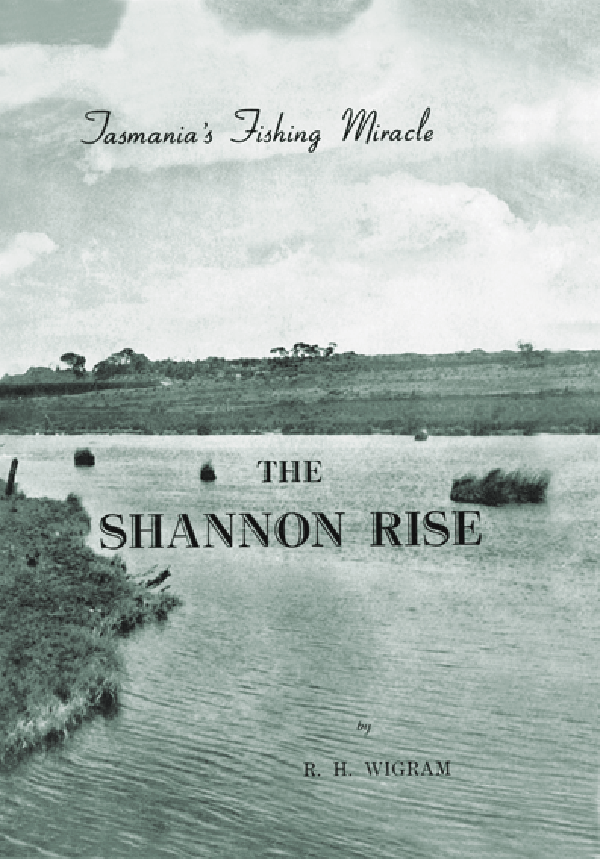 Tasmania's Fishing Miracle - Shannon Rise
Tasmania's Fishing Miracle - Shannon Rise
by R.H Wigram
The original edition of the Shannon Rise is very rare. This booklet is a facsimile of the original self covered edition.
- Category: Fishing Books
- Hits: 14430
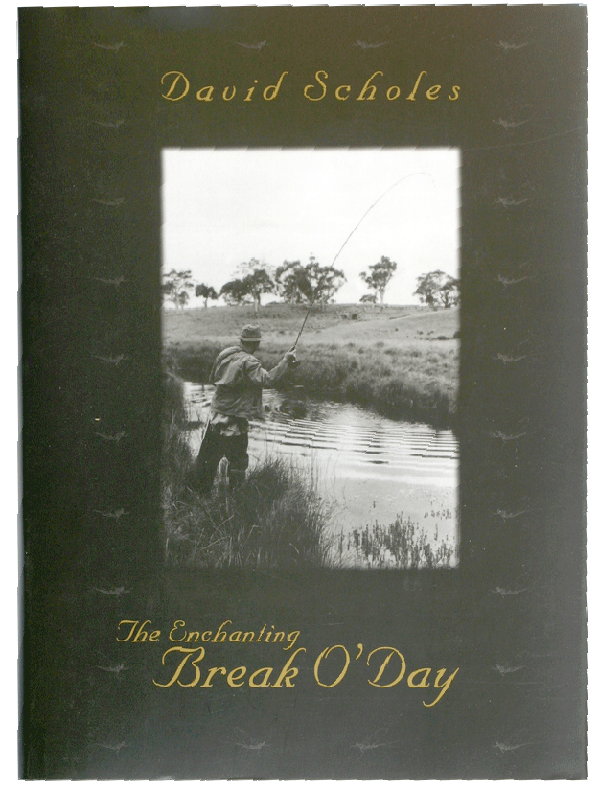 The Enchanting Break-O-Day
The Enchanting Break-O-Day
by David Scholes
The Enchanting Break-O-Day is by David Scholes about a water that is as close as Tasmania gets to spring creek fishing.
- Category: Saltwater and Estuary Fishing
- Hits: 6445
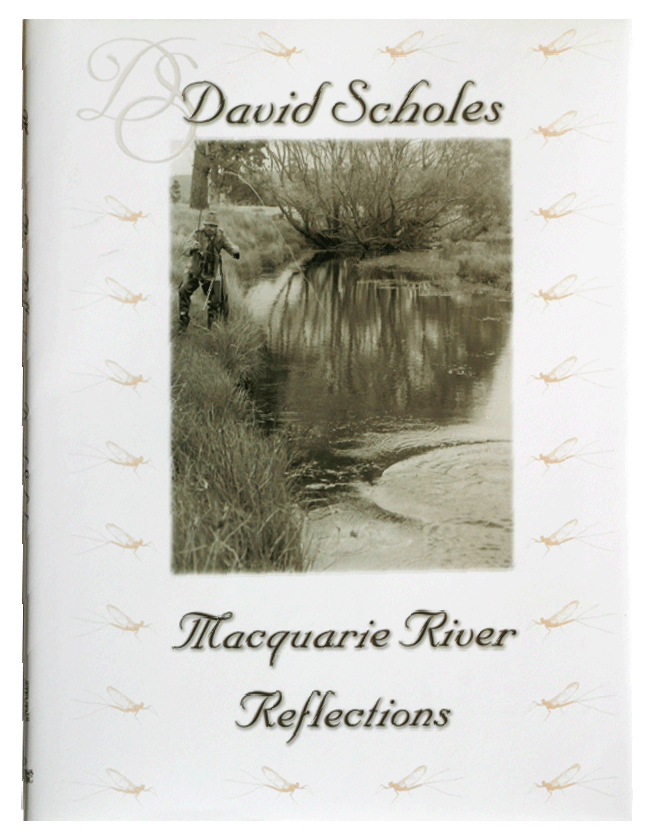 Macquarie River Reflections
Macquarie River Reflections
by David Scholes
David Scholes was inspired to write this book after numerous requests from anglers. After reading David's previous book "The Enchanting Break-O-Day', fly fishers wanted to read about David's experiences on what many consider Tasmania's premier mayfly river, the Macquarie.
- Category: Fishing Books
- Hits: 8479
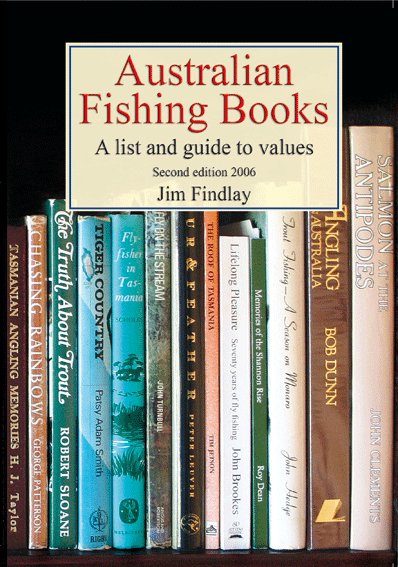 Australian Fishing Books - A list and guide to values
Australian Fishing Books - A list and guide to values
by Jim Findlay
Until the publication in 1991 of Bob Dunn's 19-page Bibliography in his Angling in Australia: Its history and writings (pp.292-311) a beginning collector was very much working in the dark. Dunn's book is a masterpiece of scholarship and his bibliography, a selective list of all reasonably accessible publications on the subject, continues to be an outstanding reference for collectors of quality books about fish and fishing.
- Category: Fishing Books
- Hits: 13594
Read more: Australian Fishing Books - A list and guide to values
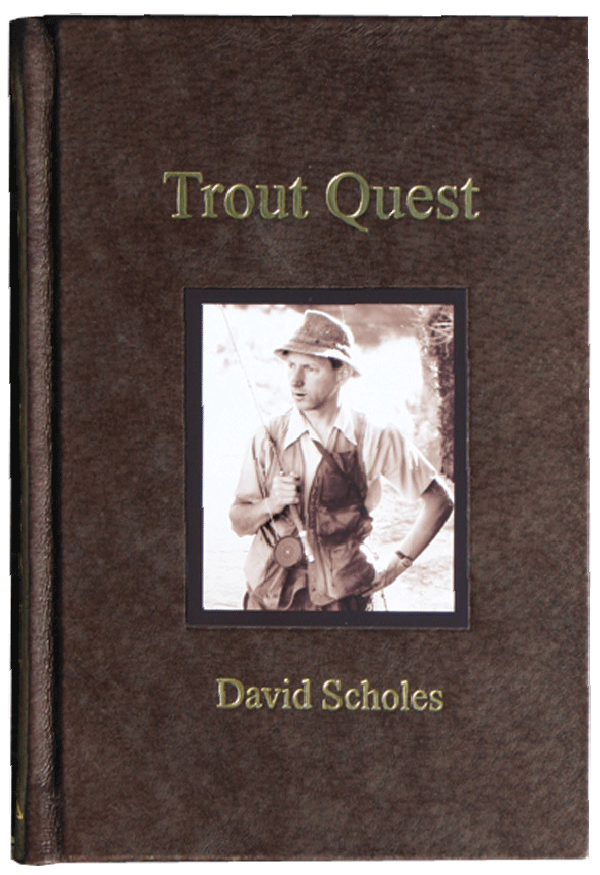 Trout Quest - Second Edition
Trout Quest - Second Edition
by David Scholes
Before David passed away, Marty Rogers and Jim Allen asked David if they could reprint Trout Quest - originally published in 1969. David readily agreed. Trout Quest has, for many years been very hard to obtain and often if a book could be found it was in poor conditon.
- Category: Trout Fishing
- Hits: 6472
Subcategories
Current TFBN
Click above for current issue content. The current issue of TFBN is extensive and topical. In Tackle Stores, Newsagents and by subscription.
Delivered to your door for $48 for 2 years (8 issues). To subscribe, send Mike $48 via www.paypal.com.au . (Basic instructions are here) The email is at Contact Us. Your address will be included from PayPal.
Or phone Mike with your c/c handy on 0418129949
Please ensure your details are correct, for Mike to organise delivery.
TFBN Newsletter Sign up Form
Why not submit an article ?
When you have finished for the day, why not have a brag about the ones that didn't get away! Send Mike an article on your fishing (Click here for contact details), and we'll get it published here. Have fun fishing - tasfish.com
Category Descriptions
Here is a list of all of the Article Categories. The number in Brackets, eg (13) is the number of articles. Click on Derwent River and all articles relating to the Derwent will be displayed in the central area.
Articles by Category
-
Rivers (3)
-
Saltwater and Estuary Fishing (149)
-
Kayak Fishing (34)
-
Lakes (1)
-
Great Lake (62)
-
Lake Leake (52)
-
Woods Lake (16)
-
Lake Augusta (11)
-
Huntsman Lake (13)
-
Lake Pedder and Gordon (10)
-
Lake Dulverton (5)
-
Lake Crescent (6)
-
Tooms Lake (10)
-
Lake Mackintosh (2)
-
Lake Barrington (5)
-
Little Lake (8)
-
Meadowbank Lake (5)
-
Lake King William (7)
-
Lake St Clair (2)
-
Western Lakes (12)
-
Arthurs Lake (35)
-
Lake Echo (7)
-
Four Springs (54)
-
Lake Sorell (7)
-
Lake Burbury (6)
-
Other Lakes (57)
-
Brushy Lagoon (18)
-
Little Pine Lagoon (5)
-
Penstock Lagoon (16)
-
Brumbys Creek (7)
-
-
Events (48)
-
Estuary Fishing (0)
-
Coastal Catches (46)
-
Super Trawler (46)
-
IFS, DPIPWE, MAST and Peak Bodies (435)
-
Commercial Interests (98)
-
Other (24)
-
TFBN Back Issues (8)
-
Fly Fishing (67)
-
Trout Fishing (250)
-
Meteorology and Weather (8)
-
Jan’s Flies (50)
-
Tuna Fishing and other Game Fishing (86)
-
Cooking Fish (19)
-
Fishing Information (1)
-
Fishing Books (8)
-
Videos (5)
-
Tackle, Boats and other Equipment (146)
-
World Fly Fishing Championship 2019 (2)
Popular Tags
windyty.com
Visit https://www.windyty.com/
Rubicon Web and Technology Training
Hello everyone, I thought it would be a good time to introduce myself.
My name is Stephen Smith and I have been managing the website tasfish.com since May 2009.
It has been an epic journey of learning and discovery and I am indebted to Mike Stevens for his help, support and patience.
I am developing a new venture Rubicon Web and Technology Training ( www.rwtt.com.au ). The focus is two part, to develop websites for individuals and small business and to train people to effectively use technology in their everyday lives.
Please contact me via www.rwtt.com.au/contact-me/ for further information - Stephen Smith.
From the Archives ... (last chance)
Early season - Bob McKinley
Presented from Issue 105, August 2013
Bob is a professional fishing guide and guides for trout and estuary species. Check him out at www.fishwildtasmania.com
There are several things we look for in our early season trout waters. It is still winter and cold, so some of the things to consider are: Altitude as this dictates the water temperature and therefore feeding activity. Food for the fish. Availability of trout food is generally dictated by the quantity and quality of weed beds.
Quantity of fish.
Three waters which I believe fit all three requirements are:
Read more ...
